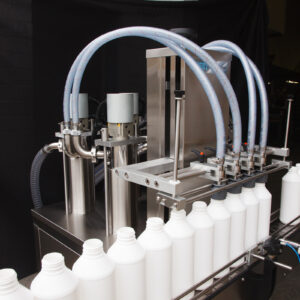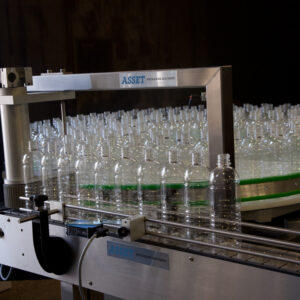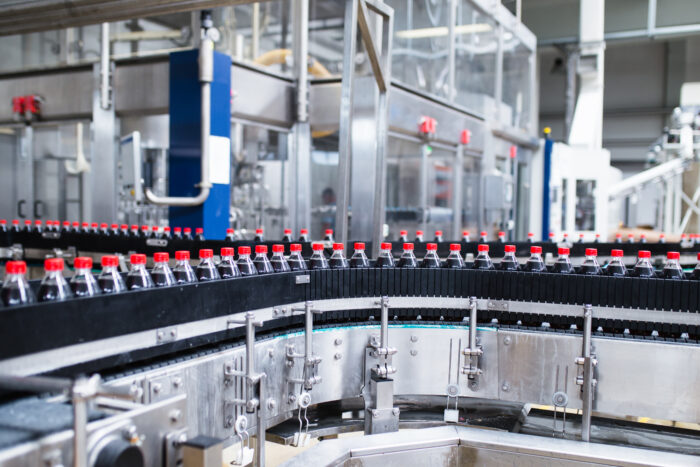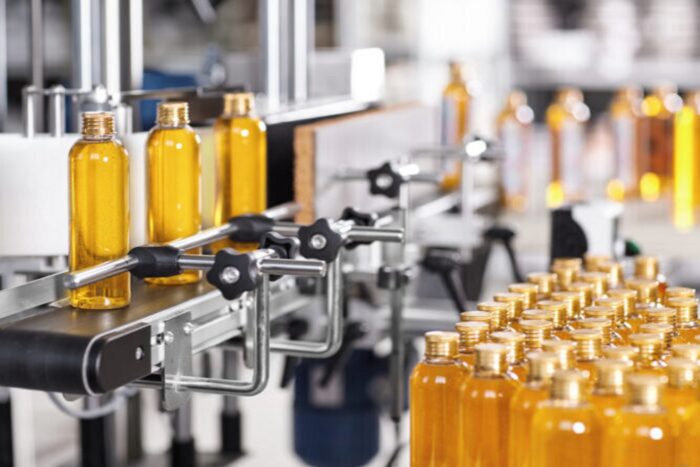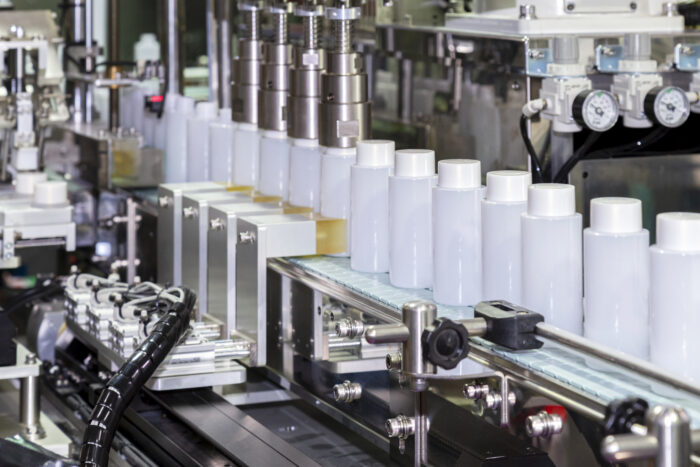Although most people are aware what a liquid filling machine does, the sheer number of different types can make finding the right machine difficult. In this article, we will describe how liquid filling machines work, helping you find the perfect option to slot into your production line and increase productivity and efficiency.
Of course, there are many types of liquid with very different properties. Filling a bottle with wine requires a different approach than filling a tube with toothpaste. The small containers used for cosmetics and pharmaceuticals need different filling technology than the large drums used for chemicals.
Liquid Filling Machine Types
The most important distinction between machines is the level of automation needed, because a large factory mass-producing products needs more complex technology than a home business.
Liquid Filling Machine Automation
Automatic filling machines need little human intervention and fill bottles before sending them to the next stage of production. Users can adjust the machine for different speeds, volumes, and container type. Semi-automatic machines require some human intervention, such moving containers in and out of the filling area.

Manual machines require humans to place the containers and operate the filler with a handle before removing the filled container. They need no power source and are particularly useful as bench-top machines for small businesses.
Inline/Rotary
Another distinction is whether machines are inline/linear or rotary. Inline filling machines are cost effective and fill containers passing along a conveyor in sequence. They are flexible and easy to upgrade, making them useful for different products and containers. Rotary machines are quicker, and can incorporate bottle cleaning and capping technology, but they tend to be more expensive and specialised for specific products and containers.
How a Filling Machine Works
Whatever the exact type of filling machine, they follow the same general principles. For automatic systems, containers pass through the machine via conveyor, and the machine fills them before they move to the next stage. However, the exact filling technology used differs, depending upon the properties of the liquid, the type of container, and the desired filling accuracy.
Filling Type
The principle behind filling is a matter of pouring the right amount of liquid into a container, but it is also the most complex part of the process. This stage, more than any other, will determine the type of machine a business needs.
Liquids come in a variety of forms, which defines the type of filling process needed. Some liquids are clear and free flowing, while others can be very viscous or foamy, or contain suspended particulates. The type of liquid and container also determine the optimal method for measuring and ensuring that the machine fills containers with the right amount of liquid.
Gravity/Siphon Filler
Gravity filling simply uses the weight of the liquid to fill the container, usually with a time-based feed from a tank located above the filling heads supplying the liquid. A valve under the filling head opens and allows the right amount of fluid to flow into the bottle before the valve closes after the allotted time. Ideally, the liquid should be free flowing, with consistent viscosity, and without suspended particles that could obstruct the heads.
Overflow Filler
Overflow filling focuses on filling bottles to the correct level, even if the process produces slight variations in volume. Especially popular with clear containers, it makes the product look consistent and visually appealing to customers. The system fills the container until it overflows, with excess product flowing back into the storage tank to prevent wastage.
Piston Filler
Piston filling machines are the best option for thick liquids and pastes, and include a valve system that uses a stroke and discharge system. The piston draws product from a drum and injects it into the container. These volumetric systems are highly accurate, can handle a range of liquids, and are common for semi-automatic machines. They are also easy to upgrade with additional filling heads.

Bottom Up/Isobaric Pressure Fillers
Bottom-up machines drop the nozzle through the spout of the container until it reaches the bottom before discharging liquid up to the desired fill level. This makes the method particularly useful for foaming liquids. Isobaric filling, used especially for carbonated products, uses a diffuser to distribute the liquid around the walls of the container and prevent loss of carbonation. Pressurised CO2 maintains constant pressure in the bottle, and the nozzle vents the excess gas as the bottle fills.
Pump Filler
Popular for thick liquids, these machines include a pump that draws the liquid from a drum and injects it into the container. Pump fillers usually determine the fill volume by counting the number of gear revolutions through a process known as pulse timing. Other systems include a time based fill, which pumps product for a preset amount of time, although this tends to be less accurate than pulse timing.
Pump filling systems to deliver less accurate volumes than pistons, but they are quick, which makes them useful for large containers where accuracy is less critical. Other types of pump use lobes or peristaltic action through squeezing rubber tubes to control product flow.
Check Weight Filling Machines
Check weight machines include a platform that monitors the weight of the liquid as it fills the container, making them particularly useful for large containers.
Interactions with Other Machines
Of course, especially for automatic lines, other machines play an important role in the production process. Conveyors connect the various systems, and are available in a range of sizes, layouts, and different materials. They ensure that bottles move from process to process with regular frequency, and have to be reliable and consistent.
At the start of the process, operatives can place containers onto an unscrambling table, which feed them into the machine at regular intervals, while other machines use fully automatic container dispensers.
Some systems wash containers before feeding them into the machine, to remove dust and contaminants, while others pre-sterilise bottles with hydrogen peroxide or similar agent to prevent food from spoiling through microbial contamination.
Once the machines have filled the containers, conveyors carry them down the production line for sealing/capping and labelling, or collect them on an accumulating table for further handling by machine or humans.
Capping machines are the next part of the process for most containers, although some liquid filling machines perform capping as part of the process. After this, systems add labels to the containers, while others shrink wrap them or place them into cartons ready for the packing machine.
Examples of Liquid Filling Machines
To highlight how liquid filling machines work, two different types show how these machines can help production lines. One machine, the Asset AV3 twin cylinder liquid filling machine, is fully automatic and includes a rotary valve fill system with volume adjustment. The machine can handle most liquids with only minor changes to configuration, and includes a safety device to ensure no bottle is unfilled.

For small applications and product runs, The AV3-1C is a premium liquid filling machine created by Asset Packaging Machines, designed to fill liquids, pastes and creams. The machine operates in semi-automatic mode and is capable of operating with a capacity suited for the needs of small backyard businesses right through to larger commercial operations.
Conclusion
Overall, there are many liquid filling machines available for a range of liquid types and container sizes and shapes. The right machine will integrate with other processes such as capping and packing, and fill the number of units per hour a business needs to improve productivity.
For this reason, working with a specialist that has experience in every business sector helps you find the perfect customised solution to move to the next level. If you want to find out more, contact Asset Packaging Machines and we will help you develop the perfect liquid filling process.






